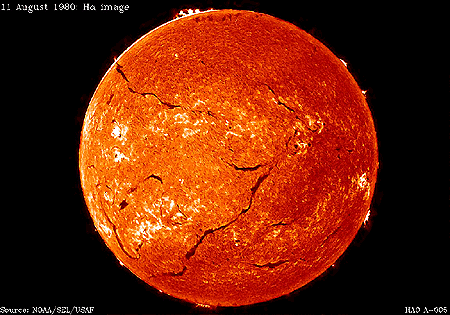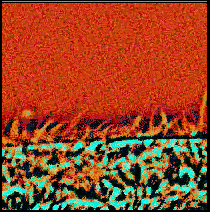A "Dancing" Layer of the Sun


Above the photosphere is a layer of gas, approximately 2000 km thick,
known as the chromosphere or sphere of color.
In the chromosphere energy continues to be transported by radiation.
Hydrogen atoms absorb energy from the photosphere and most of the energy
is then emitted as red light. The chromosphere is most easily viewed by
filtering out all other wavelengths of light from the Sun and only letting
the red light from the chromosphere through.
Views of the chromosphere show convective cell patterns similar to those in
the photosphere, but much larger. This large scale convection is known as
super-granulation.

Another interesting feature of the chromosphere is its jagged outer layer
which is constantly changing. The motion is much like flames shooting up
several thousands of kilometers and then falling again. These spiky, dancing
flames are called spicules and can be seen in the image to the right.

Transition Region
Structure Menu


